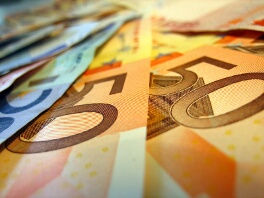
The euro slipped against the British pound and the US dollar on Tuesday, as a number of disappointing readings for business activity within the euro zone lead the shared currency lower. The euroâs losses were partly offset in the wake of a report that showed robust economic growth in the European Union during the previous quarter.
IHS Markit, a research firm that releases readings for business conditions based on monthly surveys, said in two separate reports today that European and German manufacturing activity declined in July. The German manufacturing purchasing managersâ index decreased from 59.6 in June to 58.1 in July, which disappointed forecasts that the index may remain unchanged.
The reading showed that manufacturing in Germany, the biggest economy in the European Union, eased last month but remained strong at a level well above the break-even point at 50.0. The slowdown was widespread, as output, new orders, and employment grew at a slower rate in July when compared to June.
Euro zone manufacturing growth also slowed last month as pressures from input prices lingered. The manufacturing purchasing managersâ index of the region declined from 57.4 in June to 56.6 in July. Italy, Ireland, and Spain were among economies that had slower manufacturing growth over the past month, while Greeceâs manufacturing activity remained unchanged.
Meanwhile, the French manufacturing purchasing managersâ index increased to post a reading of 54.9 last month from 54.8 in the previous month, which marks the highest level in 3 months. Higher employment pace that hit the strongest level since October 2000 lead the gain, however, the euro failed to harness enough support from the improved reading to remain positive today.
The shared currency still managed to remain near the highest level since January 2015 against the greenback as economic growth matched analyst estimates in the second quarter of 2017. Eurostat said in a release earlier today that gross domestic product of the European Union grew 0.6% in the last quarter to achieve an annualized growth rate of 2.1%.
Solid economic growth in the region may encourage the European Central Bank to start cutting back quantitative easing later this year. The European economy appears to be on the right track, however investors worry that policymakers in the central bank may feel it is necessary to maintain stimulus for longer if economic data is not consistent.
EUR/USD was at 1.1802 as of 16:25 GMT on Tuesday after touching 1.1793 at 15:40 GMT, the pairâs lowest level since yesterday. EUR/USD began trading today at 1.1824. EUR/GBP fell to 0.8932 after declining to 0.8929 at 15:05 GMT, which was also the lowest level since yesterday. EUR/GBP started the day at 0.8958.
If you have any questions, comments or opinions regarding the Euro,
feel free to post them using the commentary form below.